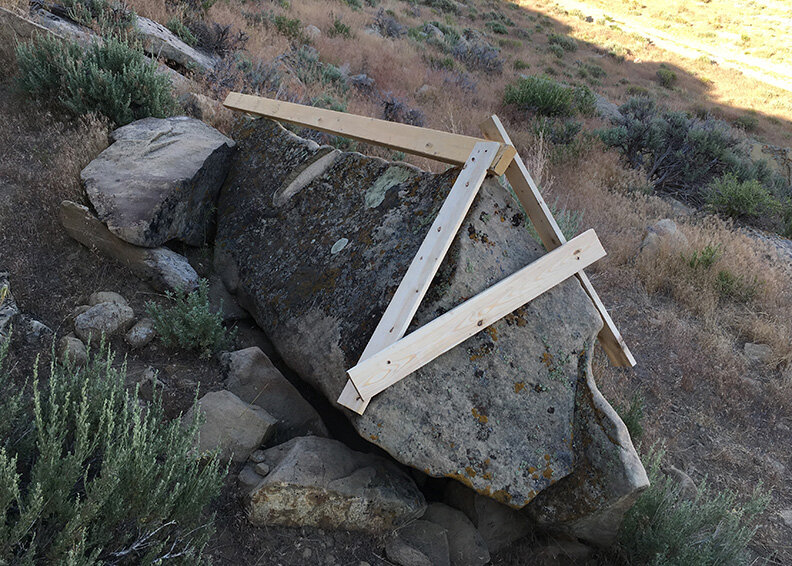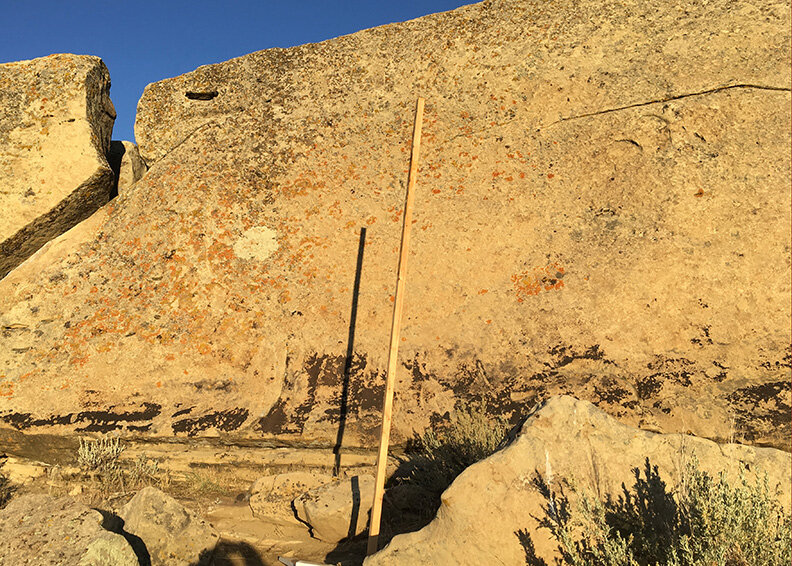"I have visited this site a number of times over the years and have come to theorize that this was at a minimum a creation of early Native Americans to monitor the phases of the sun and seasons."
This item is available in full to subscribers.
To continue reading, you will need to either log in to your subscriber account, or purchase a new subscription.
If you are a current print subscriber, you can set up a free website account and connect your subscription to it by clicking here.
If you are a digital subscriber with an active, online-only subscription then you already have an account here. Just reset your password if you've not yet logged in to your account on this new site.
Otherwise, click here to view your options for subscribing.
Please log in to continue |
Bill Harris observed the “sundial” carved into a rock face near the old Cumberland mine. Harris speculated that the rock lying at the base of the sundial once stood vertically and acted as a pointer to measure the seasons and phases of the sun. (COURTESY PHOTO / Bill Harris)
I was born and raised in Frontier and became aware of the “sundial” near the old Cumberland mine quite some time ago. I suppose I, like most people who have visited the site, can only imagine why anyone would go to the effort to make such an object into the rock face there.
During the past few years I saw some programs on PBS about ancient American ruins. and there were a couple of different places where they were observing the motion of the sun throughout the year. In each instance, there were always two elements to the observation site. One was a rock face with markings, and the other was either an obstacle that blocked light except for a certain time of day when a spot or wedge of light would shine on the face of the rock with the markings or would cast a shadow onto the marked rock face. This got me thinking about the old Cumberland Sundial.
As I studied the old sundial I realized that there was a unique long rock lying near the face of the sundial. As I studied it I also observed that there was a rock shelf at the left end of this rock. I imagined the rock standing on its end on that rock shelf near its base and thought that it could easily cast a shadow onto the sundial.
The best time of day to visit the site to see the image on the cliff face is shortly after noon when the sun shines across the face of the rock, revealing the image’s shape and indentations, as shown in the image above. Near the right side of the base of the sundial lies a long pointed rock. It is about eight feet long with one flat end.
I have visited this site a number of times over the years and have come to theorize that this was at a minimum a creation of early Native Americans to monitor the phases of the sun and seasons.
I have not seen or read any historical theories about the creation of this site. The process of removing materials from the stone face to make this circle that resembles the sun must have taken considerable effort and time.
I had the theory that the rock in front of the stone face once stood vertically — either intentionally erected or happening to fall that way from the ledge above, we don’t know. This stone would then cast a shadow on the wall at sunrise. The shadow would then move north and south with the seasons.
I decided to make a simple 2x4 model of the stone and place it at the base where I believe the rock once stood and observe the shadow on the sundial with the seasons. See the photos below for a view of the shadow on the sundial at the summer solstice, equinox and winter solstice.

Harris said he believes this rock once stood on end and acted as a pointer for the sundial near the old Cumberland mine. He measured the height of the sundial to make a vertical model that would cast a shadow on the rock face throughout the seasons. (COURTESY PHOTO / Bill Harris)
The model was placed as near as possible to the same location for each test. It is interesting that the shadow touches the outside edges of the rock circle at both solstice conditions and the equinox.
From these tests it seems reasonable that the rock now lying down once stood vertically and cast its shadow on the face of the sundial engraving to indicate solstice and equinox conditions. The rock and sundial may have had other significance as well.
This photo shows the shadow of Harris’ model on the Cumberland sundial at the summer solstice. (COURTESY PHOTO / Bill Harris)
This has been fun to think about and imagine the combination of the stone pointer and rock face functioning as a seasonal indicator and perhaps serving other meaningful purposes to those Native Americans who lived here some time ago.
I would be interested in hearing if there have been other theories presented as to the purpose of such an undertaking by the earlier inhabitants of the area.
Cumberland sundial at the winter solstice. (COURTESY PHOTO / Bill Harris)

Cumberland sundial at the equinox. (COURTESY PHOTO / Bill Harris)